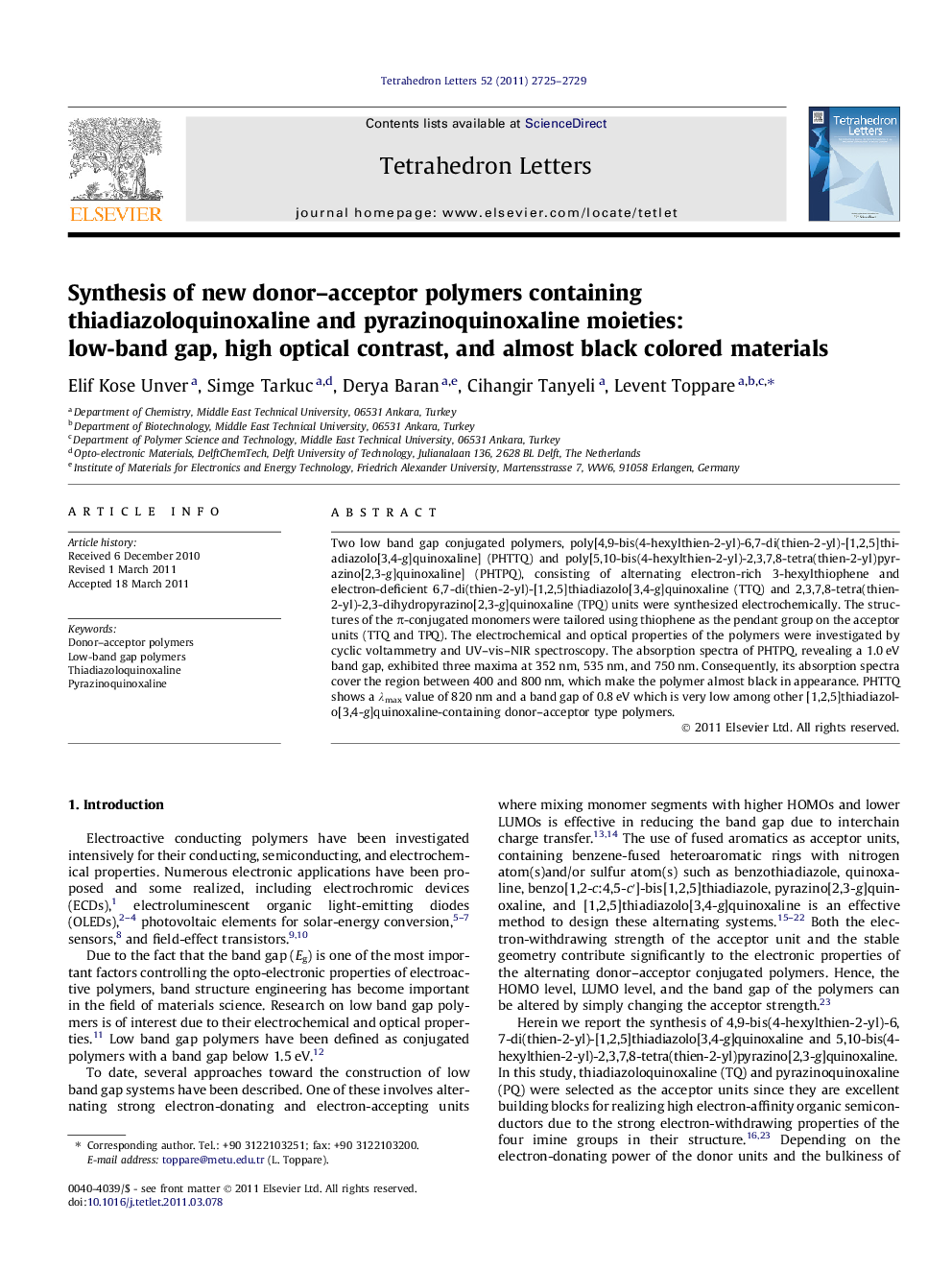| Article ID | Journal | Published Year | Pages | File Type |
|---|---|---|---|---|
| 5270064 | Tetrahedron Letters | 2011 | 5 Pages |
Two low band gap conjugated polymers, poly[4,9-bis(4-hexylthien-2-yl)-6,7-di(thien-2-yl)-[1,2,5]thiadiazolo[3,4-g]quinoxaline] (PHTTQ) and poly[5,10-bis(4-hexylthien-2-yl)-2,3,7,8-tetra(thien-2-yl)pyrazino[2,3-g]quinoxaline] (PHTPQ), consisting of alternating electron-rich 3-hexylthiophene and electron-deficient 6,7-di(thien-2-yl)-[1,2,5]thiadiazolo[3,4-g]quinoxaline (TTQ) and 2,3,7,8-tetra(thien-2-yl)-2,3-dihydropyrazino[2,3-g]quinoxaline (TPQ) units were synthesized electrochemically. The structures of the Ï-conjugated monomers were tailored using thiophene as the pendant group on the acceptor units (TTQ and TPQ). The electrochemical and optical properties of the polymers were investigated by cyclic voltammetry and UV-vis-NIR spectroscopy. The absorption spectra of PHTPQ, revealing a 1.0 eV band gap, exhibited three maxima at 352 nm, 535 nm, and 750 nm. Consequently, its absorption spectra cover the region between 400 and 800 nm, which make the polymer almost black in appearance. PHTTQ shows a λmax value of 820 nm and a band gap of 0.8 eV which is very low among other [1,2,5]thiadiazolo[3,4-g]quinoxaline-containing donor-acceptor type polymers.
Graphical abstractTwo new conjugated polymers, PHTTQ and PHTPQ, have been synthesized by alternating 3-hexylthiophene as the donor unit and a thiadiazoloquinoxaline (TQ) and a pyrazinoquinoxaline (PQ) as the acceptor units, respectively. They have low band gaps (1.0Â eV for PHTPQ and 0.8Â eV for PHTTQ), due to the properties of the acceptor units. PHTPQ is almost black in color in its oxidized state and exhibits 84% optical contrast in the NIR region.Download full-size image
